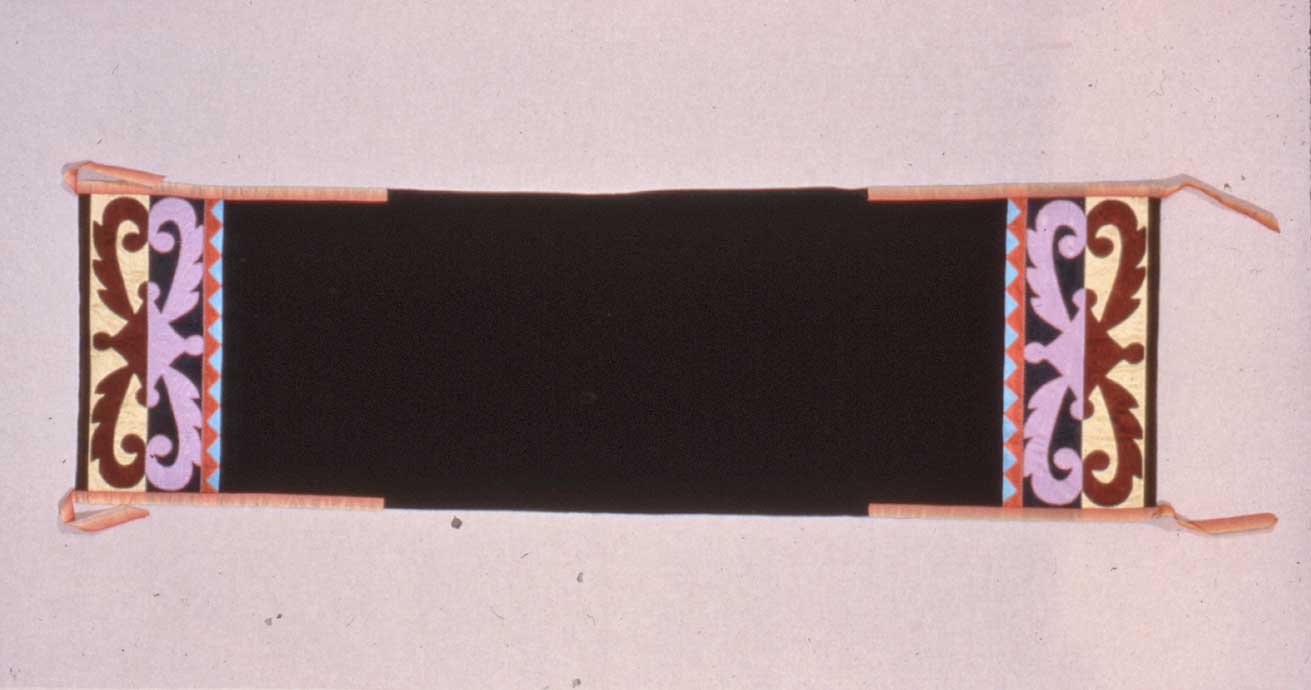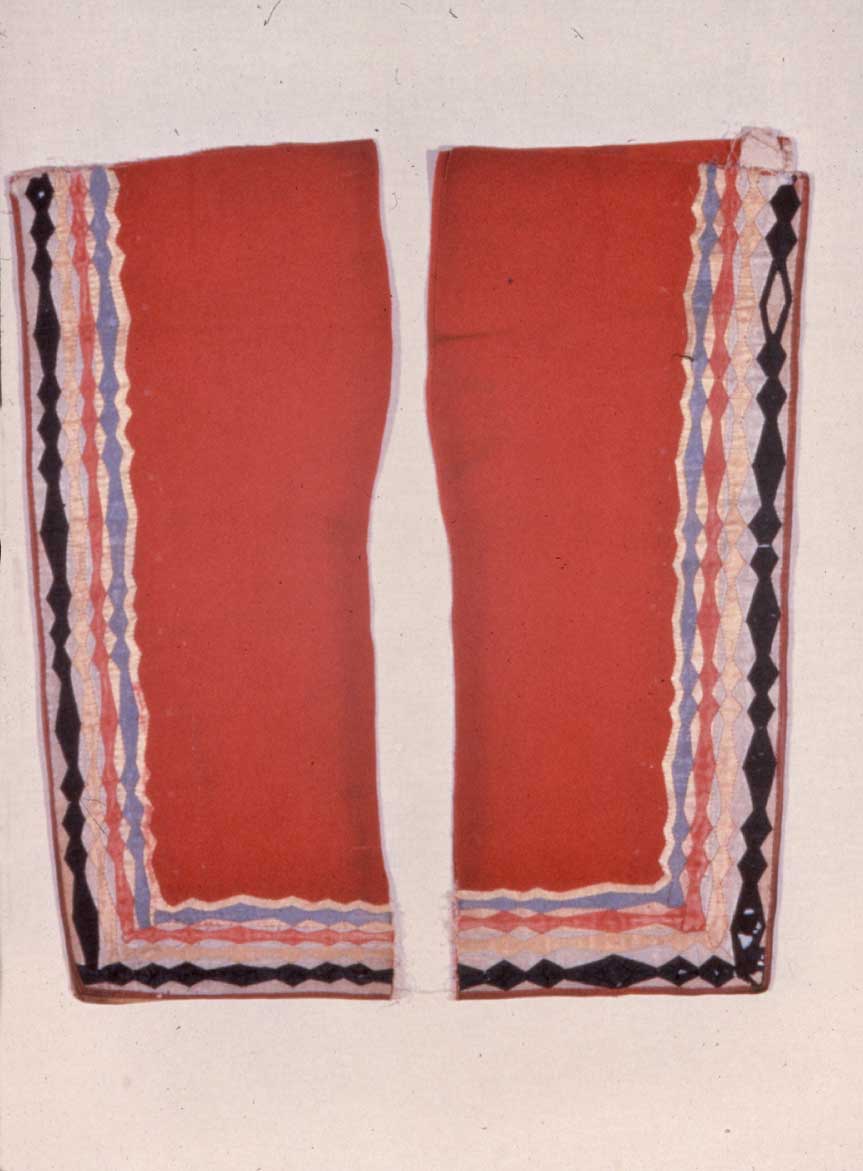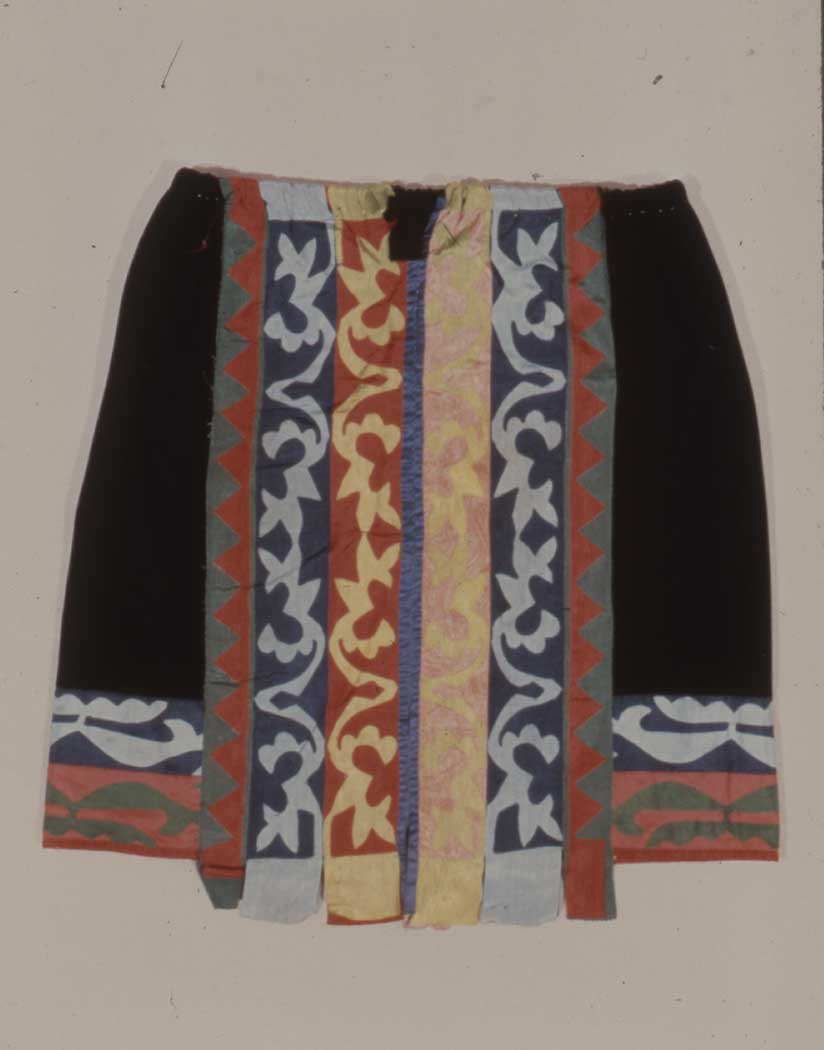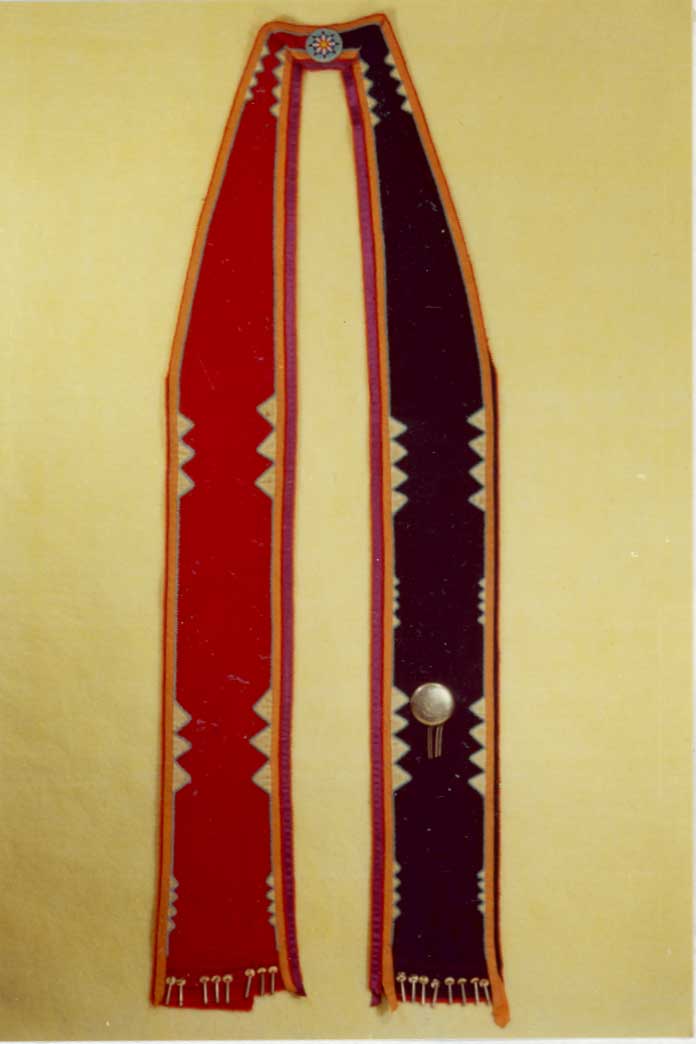Ribbonwork is a type of applied decoration used by dozens of Indian tribes in North America.
The art form is highly developed among Woodland Indian nations in particular. Similar to beadwork, ribbonwork functions as a decoration appliqué to clothing and other items.

E56273/17706 Fox Breechcloth
The appliqué is created by cutting silk ribbons into layered strips and then cutting or folding the individual ribbons at different levels to reveal patterns of various colors. The ribbonwork strip is then attached to a separate item, usually as trim, for decoration. Commonly, brightly-colored ribbons are used and paired with a simple background to create a bold visual effect.

E29970/7216 Menominee Shawl
Traditionally, ribbonwork was created by women, and the knowledge of the craft and specific designs was passed on to successive generations. Ribbonwork designs may vary among tribes, families, or even individuals. Garments with ribbonwork appliqué are often worn for special occasions, particularly powwows and other dance or ceremonial events. The most common items for ribbonwork appliqué include blankets, leggings, moccasins, wrapping bands, dance costumes, women’s skirts and shawls, and men’s shirts and breechcloths. Ribbonwork can also be seen less frequently applied to cradle boards, knee bands, medicine bundles, stoles, and turbans.
 E23441ab/6140 Potawatomi Leggings |
 E57514/18251 Fox Skirt |
The craft is a result of European colonialism, combining European trade goods with native ingenuity and designs. Ribbonwork appliqué began in the early part of the 19th century, made possible by the introduction of European silk ribbons as trade items in the 18th century. After ribbonwork developed in the Great Lakes, it quickly spread to dozens of other neighboring Woodland and Prairie tribes. The craft was most highly developed among the Winnebago, Potawatomi, Menominee, Fox, Miami, Sauk, Shawnee, Delaware, Osage, and Kickapoo.
 E64458/27301Kickapoo Moccasins |
 E64985/27301 Tonkawa Stole |
The Milwaukee Public Museum ribbonwork collection consists of over 140 pieces and represents ribbonwork from over 20 tribes. Several examples can currently be seen on exhibit on the second floor of the Museum. Many of the Museum’s ribbonwork pieces are from the James Howard Collection, which comprises an assortment of powwow outfits donated by anthropologist and collector James Howard.
Web page developed by Gillian Weaver, Colgate University Anthropology student, 2011. Questions? Contact Dawn Scher Thomae.

